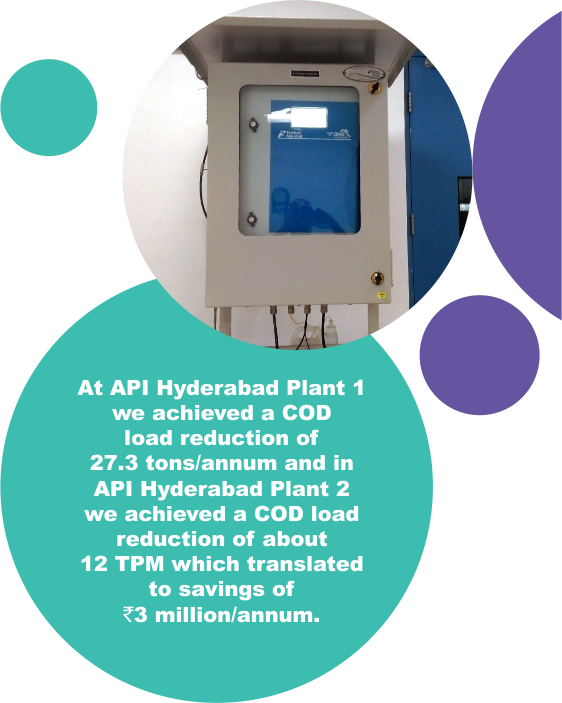Process effluent from every production block was earlier sent for
treatment to the ZLD plant. This combined effluent had a very high
COD. |
To address this issue, every individual effluent stream was
identified and their COD values determined. It was found that the
COD value of the effluent from SRS was around 700,000 mg/l and
its generation was approximately 2 kld. |
It was obvious that if the solvent layer in the effluent could be
separated it could substantially bring down the COD levels.
Laboratory experiments were initiated and it was found that the
easiest and most efficient way to separate the solvent layer was
to allow it to settle down for two hours. |
We adopted this simple methodology to separate the solvent. The
clear aqueous layer without the solvent is sent to the ETP, while
the solvent is sent to the cement industry for co-processing. |
As a result, we have been able to achieve a drastic reduction in
COD levels. For example, in API Hyderabad Plant 1 we achieved
a of COD load reduction of 27.3 tons/annum and in API Hyderabad
Plant 2 we achieved a COD load reduction of about 12 TPM which
translated to savings of ₹3 million/annum. |

